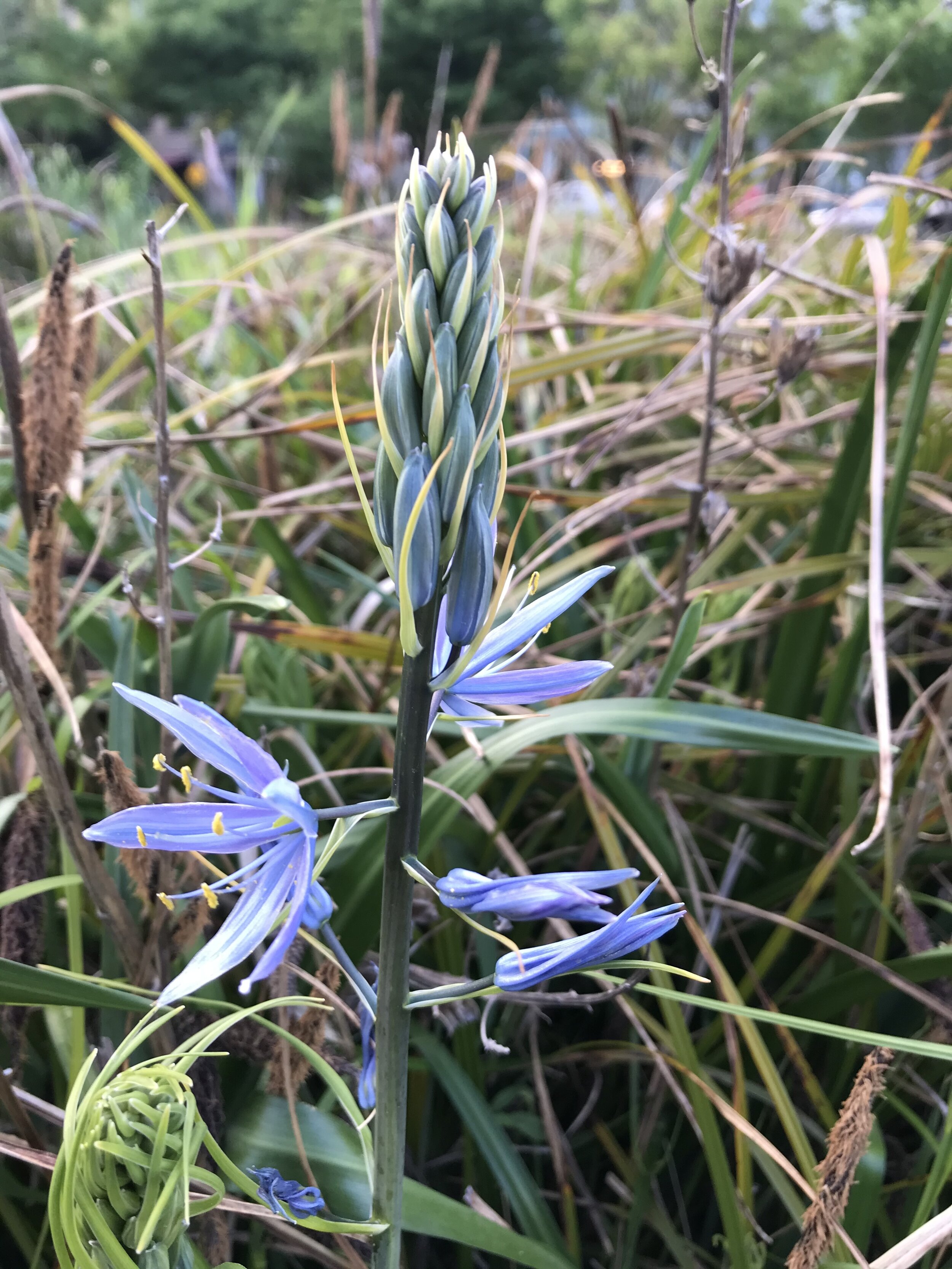Common Camas (Camassia quamash)
Common Camas might be the most culturally significant flower to the northwest. Camas bulbs are considered to be a food delicacy by many northwest native tribes; specifically Western Washington and Vancouver Island tribes like the Squamash, Coast Salish, Comox, and Kwak-waka’wakw, but also many Oregon tribes like the Multnomah, Clackamas, Umpqua, and Kalupya.
Camas is an ephemeral perennial flower from the lily family that produces deep violet flowers between April and June. They grow in grasslands, meadows and in wetlands. The flowers have bilateral symmetry, five sepals, five tepals, and three stigmas. The leaves are grasslike, long, and narrow.
Common Camas was semi-cultivated by many northwest tribes. They used controlled burnings to encourage Oak prairie habitat, removed large debris from the camas meadows, and in some cases planted the bulbs. Camas bulbs are edible, but they require days of cooking before they are digestible, so they were often cooked underground in piths for 24 hours or longer. The bulbs taste similar to baked pear or potato, and the longer you cook them, the sweeter they become. Camas is harvested soon after the flowers bloom to ensure that common camas was harvested and not death camas which has cream colored flowers and is deadly. After days of harvesting, families and friends would gather to cook the bulbs in underground pits. Once bulbs were prepared, they held a celebration to mark the beginning of spring.
Traditionally, camas patches were inherited through family. The knowledge on how to harvest, cook, and care for camas meadows was passed down generations. Every tribe and family might prepare it differently, but the camas tradition is widespread in northwest native culture. Unfortunately, camas habitat has decreased significantly due to excessive development, agriculture, and the removal of native Americans from their ancestral lands. I discovered this patch of common camas in Tanner Springs park, an urban park that pays homage to the prairie habitat that once flourished in Oregon, and would highly recommend visiting the meadow to reflect on how the landscape has changed over the years.



